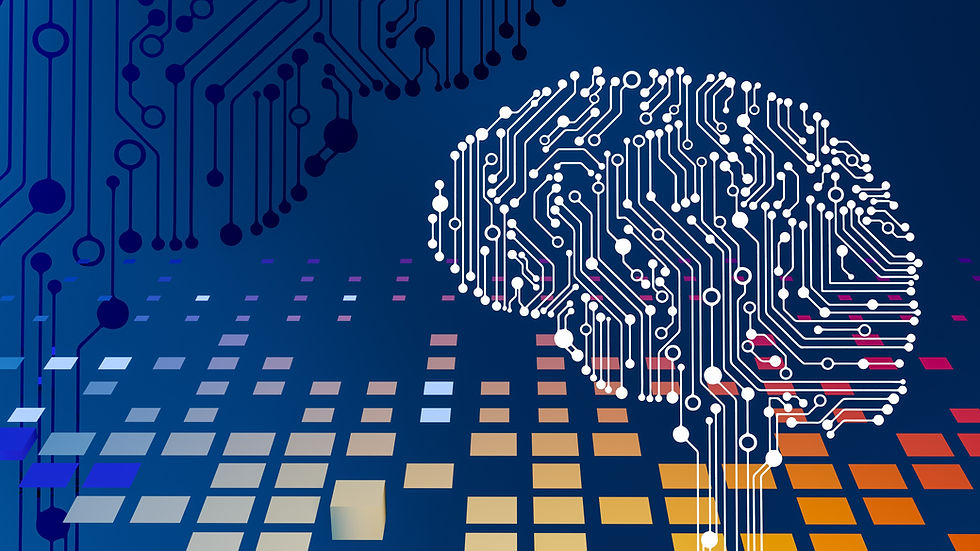Empowering Safety: Revolutionizing Assisted Living Communities with AI and IoT
- dtiTek

- Jul 30, 2023
- 3 min read

Role of AI & IoT in Assisted Living: Introduction
Assisted living communities play a vital role in providing care and support for older adults requiring assistance with daily activities. The integration of AI (Artificial Intelligence) and IoT (Internet of Things) technologies has brought about a significant transformation in ensuring safety within these communities. By harnessing the capabilities of these advanced technologies, assisted living communities can prioritize the well-being and security of their residents, offering peace of mind to both residents and their families.
In the era where technology is constantly evolving, AI (Artificial Intelligence) and IoT (Internet of Things) have emerged as key players in transforming various industries. One sector that is witnessing a profound transformation is assisted living. By employing technology for assisted living, we can create a more connected, efficient, and compassionate environment for the elderly and those who require special care.
This article delves into how the integration of AI and IoT is revolutionizing assisted living communities, providing them with unprecedented capabilities to enhance the quality of life.
Smart Monitoring and Surveillance
Strategic placement of AI and IoT-driven sensors and cameras throughout assisted living communities allows for comprehensive monitoring of residents' well-being and the identification of potential safety hazards. These technologies can track movement patterns, monitor vital signs, and alert caregivers in cases of emergencies or unusual activity. Real-time data analysis by AI algorithms enables the identification of potential risks, promptly notifying staff for swift response and preventive measures.
Understanding the Role of AI in Assisted Living
Personalized Care
AI-driven algorithms can tailor care plans to individual needs, adjusting in real-time as conditions change. This includes monitoring health status, recognizing patterns, and predicting potential health concerns.
Virtual Companionship
Through AI-powered chatbots and virtual assistants, technology for assisted living can provide companionship and support, thus reducing feelings of isolation and loneliness.
Enhanced Security
AI-enabled cameras and sensors can detect falls or abnormal activities, triggering alerts to caregivers or emergency services, ensuring a rapid response.
Fall Detection and Prevention
Falls pose a significant concern in assisted living communities. AI and IoT solutions, such as wearable devices or smart sensors, can detect falls by analyzing changes in movement and posture. These technologies immediately alert staff to provide timely assistance. Furthermore, predictive analytics can identify residents at higher risk of falling, facilitating proactive interventions like personalized exercise programs and environmental modifications.
The Power of IoT in Assisted Living
Remote Monitoring
IoT devices provide continuous monitoring of vital signs and daily activities, allowing caregivers to access real-time information from anywhere, enhancing response times and ensuring safety.
Smart Homes
By integrating IoT into assisted living communities, smart home technology can adapt to residents' preferences, controlling lighting, temperature, and more, allowing for a more comfortable living environment.
Seamless Communication
IoT-enabled wearables facilitate instant communication between residents and caregivers, ensuring that help is always a button press away.
Medication Management
Managing medications can be complex for residents in assisted living communities. AI-powered systems automate medication reminders and dispense the correct dosage at scheduled times. These systems also detect missed doses or potential medication interactions, promptly notifying caregivers to ensure resident safety and adherence to prescribed regimens.
Emergency Response Systems
AI and IoT technologies enable quick and efficient emergency response in assisted living communities. Wearable devices equipped with fall detection, GPS tracking, and voice-activated assistance empower residents to summon help at any time. Integration with smart home systems automatically sends emergency alerts to caregivers and emergency services, ensuring rapid response and minimizing potential risks.
Combining AI and IoT: A Future of Excellence
Integrating both AI and IoT takes technology for assisted living to a whole new level. Here’s how:
Data-Driven Decisions
The synergy of AI and IoT provides a rich data pool, enabling more informed decisions in care plans, enhancing efficiency, and maximizing resources.
Community Integration
Creating an interconnected community fosters a sense of belonging among residents while facilitating better coordination among caregivers, enhancing the overall assisted living experience.
Ethical Considerations
As we move towards a more connected environment, considerations related to privacy and ethics become crucial. Ensuring responsible use of AI and IoT is essential for maintaining trust and safety.
Conclusion
The integration of AI and IoT technologies has significantly enhanced safety in assisted living communities. By leveraging smart monitoring, fall detection and prevention, medication management, and emergency response systems, these communities create an environment that prioritizes the well-being and security of their residents. With ongoing technological advancements, the potential for further innovation in enhancing safety within assisted living communities is immense. By harnessing the power of AI and IoT, we can continuously improve the quality of life for older adults, providing them with the peace of mind they deserve.
The adoption of AI and IoT is undoubtedly revolutionizing assisted living communities, reshaping the way we care for those who need it most. From personalized care to smart homes, these technologies are enhancing not just the efficiency of operations but the very quality of life.
As technology for assisted living continues to advance, so does our ability to provide compassionate and human-centered care. The future of assisted living is here, and it is smarter, more connected, and more compassionate, thanks to AI and IoT.

